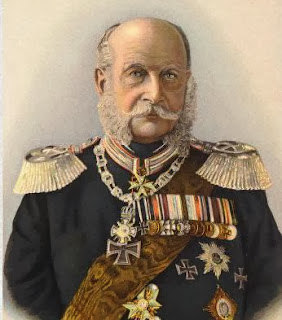 |
| map of the Holy Roman Empire |
Germany did not become an independent nation until 1871, after the Holy Roman Empire came to an end. From the 1600s to the 1800s, the
Holy Roman Empire was still in existence in Europe. Many challenges existed
though for the empire. In the text,
Germany: A New History, by Hagen Schulze, we are informed of
the state of the empire. He states, “The drastic decline in population and general
poverty following the end of the Thirty Years’ War were matched by widespread
economic stagnation, as the territories of the empire were cut off from the growing
transatlantic trade and fruits of colonial conquests abroad” (70). The empire was clearly in bad shape and
appeared as weak and unimpressive to the rest of the world. Calls for reform
and unification began to break out across Europe. Thirst for power and change among
the principalities led to many wars throughout the empire. The shifting of
national boundaries was not rare during this time, with so many conflicts
taking place.
 | ||
| map of central Europe 1862-1871 |
 |
| Franco-German War |
By 1797, the number of principalities had dropped from three
hundred and four to only thirty (97). Great change and reform spread across
Europe. War raged for years, leaving Europe fragmented like before. The German people
wanted a free and united Germany to rise. German nationalism was reborn around
1840, but there continued to be unrest in Europe. Demands for freedom and a federal German
state became more prominent. Then the industrialization and the birth of
railroads meant that a unified economy was finally possible in Germany. This
transformed German society. Once again, the public was seized by German nationalism
and the prospect of a new future for their country. War led to the Treaty of
Prague and the new establishment of the North German Confederation. France
wanted to stop a German unity from happening though. The Franco-German War
resulted. In the end, a peace treaty was signed on May 10, 1871. King William I
of Prussia became the German emperor and Germany became its own nation at last.
 |
| King William I |
The German state was founded after the efforts of centuries
of conflict and resolution. The wars throughout Europe continually shaped the
continent and its numerous territories and principalities. The hunger for power
and freedom seemed to drive these conflicts. With so many different states, it
was difficult for the continent to be unified. So many different cultures and
ideas all mingled in a small region. Europe was continually evolving. Germany’s
identity evolved along with Europe. The desire for freedom, education, and
independence led Germany to unification. The people desperately wanted to be
unified. They fought for what they believed in and became their own nation.
Word Count: 606